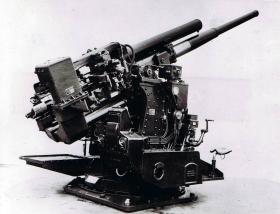The 3.7 Inch Anti-Aircraft Gun was a British designed smooth bore artillery piece that was theorised in 1933. After the Vickers-Armstrong Ltd design was accepted in 1936, production was authorised in 1937 and began in January 1938.
A unique feature of this gun would be the Molins Fuze Setter No. 11 which combined the fuze setter with the loading mechanism to improve efficiency. This was affectionately called the 'Pig's Ear' by the British Army.
The gun required a crew of 7 and later models could fire up to 45,000 ft vertically.
By 1943 the Mk VI had advanced radar, rifling and predictors, giving it an 82% success rate against flying bombs.
Production of the 3.7 Inch Anti-Aircraft Gun finished in 1945, however there are still 45 in service with the Nepalese Army.
Calibre: 3.7 inch (94mm)
Elevation: -5 to +80 degrees
Traverse: 360 degrees Range: 45,000ft (Vertical) 18,800ft (Horizontal)
Weight: 8 tonnes






Latest Comments
There are currently no comments for this content.
Add Comment
In order to add comments you must be registered with ParaData.
If you are currently a ParaData member please login.
If you are not currently a ParaData member but wish to get involved please register.